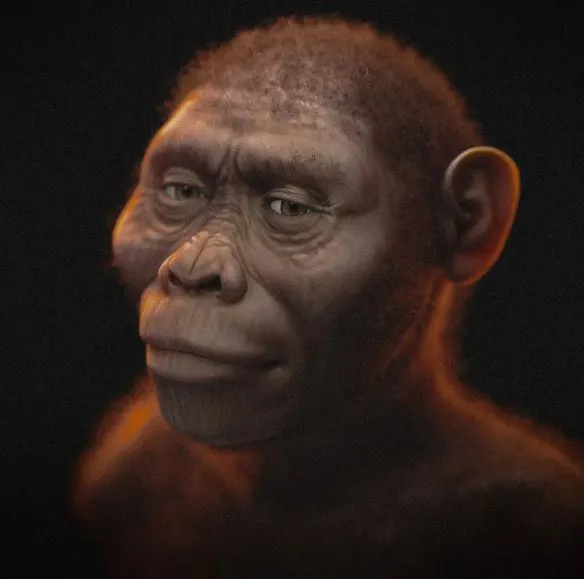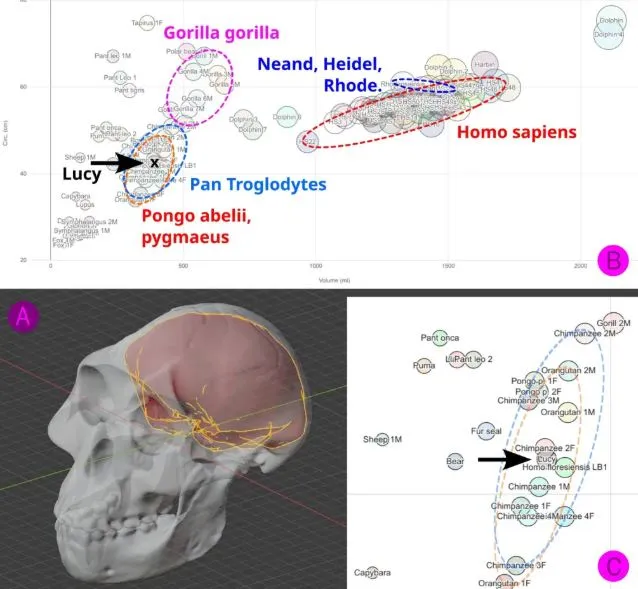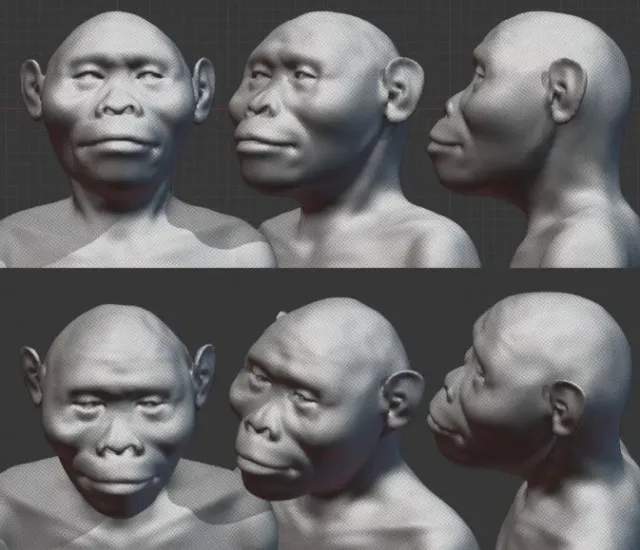A new digital reconstruction of the Australopithecus afarensis skeleton known as “Lucy” offers a striking look at one of humankind’s earliest ancestors — a face millions of years in the making.
A Landmark discovery gegts a 21st-century update through facial reconstruction
Nearly 50 years after her remains were unearthed in Ethiopia, Lucy, the world’s most famous early hominin, has received a cutting-edge digital makeover.
Using advanced forensic techniques and evolutionary science, researchers have created a realistic facial reconstruction of Lucy.

It offers the public its clearest glimpse yet of one of humanity’s earliest evolutionary bridges.
“Seeing Lucy’s face is like glimpsing a bridge to the distant past,” said Cicero Moraes, a Brazilian specialist in forensic facial reconstruction who led the project.
“It offers a visual connection to human evolution.”
Lucy: The prehistoric celebrity who changed everything we know about human origins
Discovered in 1975 by American paleoanthropologist Donald Johanson, Lucy’s fossilized skeleton revolutionized our understanding of human ancestry. Standing at just 3.5 feet tall, this female Australopithecus afarensis lived over 3.2 million years ago in what is now Ethiopia.
Her small brain challenged previous assumptions that brain enlargement preceded upright walking, reshaping evolutionary theory.
Scientists used skull scans and primate data to bring Lucy’s face to life
While artistic interpretations of Lucy’s face have circulated for decades, Moraes’ team sought to create an anatomically accurate reconstruction based on the latest scientific data.
The process began with high-resolution scans of Lucy’s fossilized skull.
These were then paired with soft tissue data from chimpanzees — close relatives with brain and cranial dimensions similar to early hominins
Moraes said the facial tissue depth, muscle structure, and skin tone were adapted using paleoanthropological research.
These features accounted for environmental conditions in prehistoric Ethiopia.

“The reconstruction blends science and art,” said Moraes. “It’s a reflection of technological progress that makes an extinct being tangible.”
Lucy’s reconstructed face shows both human and primate features
The final 3D bust, revealed on Moraes’ social media, portrays Lucy with a flatter face, reduced brow ridge, and less protruding jaw than modern chimpanzees.
However, she still appears far from resembling a modern human,
Her primate ancestry is evident in the hair coverage and facial structure, yet the reconstruction hints at our shared evolutionary roots.
“She has a less pronounced brow ridge than in chimpanzees, though still distinct from modern humans,” Moraes noted. “We were somewhat limited by the condition of the cranial fragments, but the results are striking.”
This depiction aligns with fossil evidence showing that Lucy’s upper body retained tree-climbing adaptations. While her lower half was optimized for walking, marking her as a true transitional figure in human evolution.
A technological bridge between past and present deepens understanding of evolution
The new Lucy Australopithecus reconstruction provides more than a visual update. It deepens public engagement with science and underscores the power of technology in unraveling our evolutionary story.
Moraes, who has previously reconstructed faces ranging from King Tut to Saint Nicholas. Moraes also hopes that Lucy’s updated image fosters curiosity and respect for the deep roots of humanity.
“The reconstruction allows us to imagine what she might have looked like 3.2 million years ago,” he said. “It enriches both public and scientific understanding of our ancestors.”
